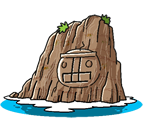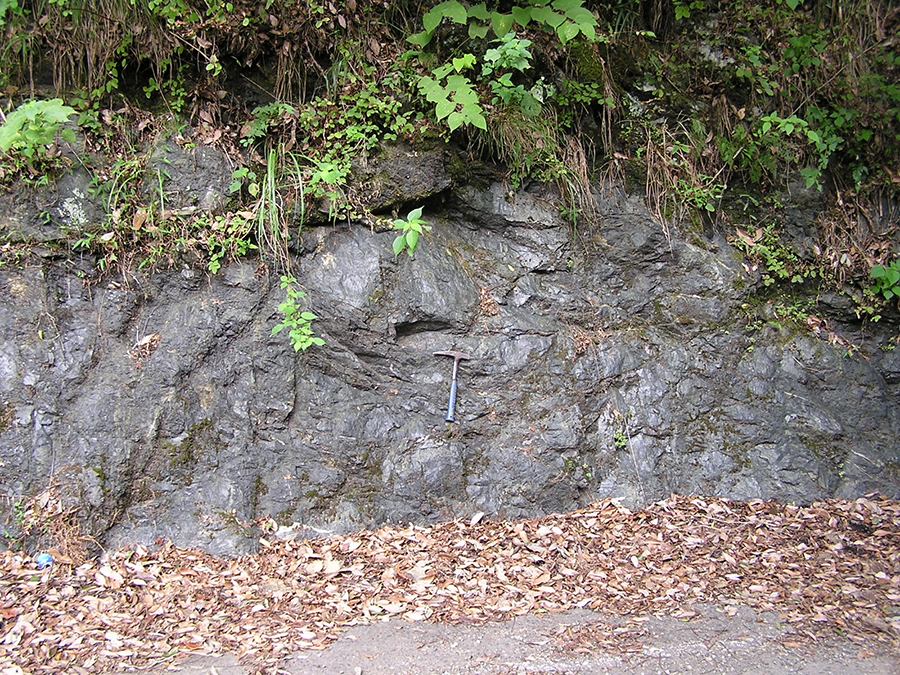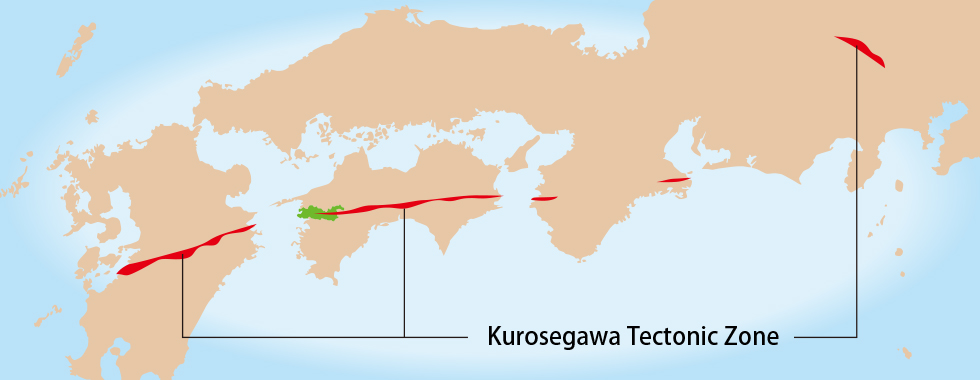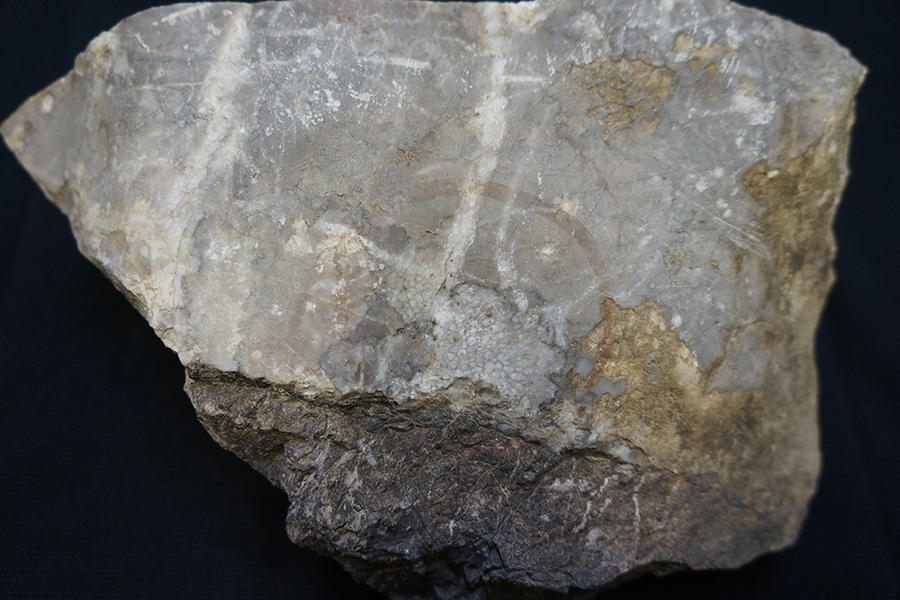- TOP>
- Kurosegawa Tectonic Zone
 Kurosegawa Tectonic Zone
Kurosegawa Tectonic Zone


The clue may be clarified the process of the formation Japanese Archipelago.
 Kurosegawa Tectonic Zone
Kurosegawa Tectonic Zone
Most of the Japanese Archipelago’s geological features are more recent than Mesozoic era that began about 250 million years ago. However, geological findings from the soil near Kurosegawa River that flows through the Shirokawa area has revealed fossils of coral and trilobites from over 400 million years ago. This was the first area here a full-scale survey of Kurosegawa Tectonic Zone took place, hence the name.

Kurosegawa Belt, extending for a total of 1,000km
Kurosegawa Tectonic Zone and relevant groups (Kurosegawa Belt) are narrow at several kilometers in width, stretching from Kyushu to the west and Kanto to the east, extending for a total of about 1,000km. It is believed that an ancient land, which was originally one mass, formed the current long, thin tectonic zone as it went through large-scale tectonic movements.

Were did Kurosegawa Tectonic Zone come from
In the accretionary wedges we can see rocks made in the sea, while in the Kurosegawa Tectonic Zone we can observe rocks made on the continent (Mitaki Igneous Rocks, Terano Metamorphic Rocks). In addition, fossils of coral called favosites, which lived in a shadow, warm seawater, have been found. The Kurosegawa Tectonic Zone is thought to have been part of the land that existed on a distant continent.

Favosites found in Kurosegawa Tectonic Zone














